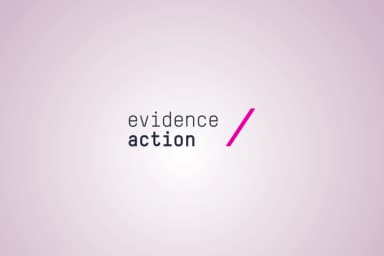GiveDirectly: Latest Developments and Insights

The Problem
More than 700 million people worldwide live in extreme poverty, which means having less than $2.15 per day to live on (World Bank 2022).
Many traditional approaches to development aid (DA) are inefficient, expensive, and often not aligned with the actual needs of the people.
Funds frequently flow into complex administrative structures or politically motivated projects instead of directly benefiting those in need (Effektiv Spenden 2025).
The Solution: Cash – Direct and Unconditional
GiveDirectly takes a radically simple approach: People living in extreme poverty receive money directly and unconditionally.
The idea: No one understands their own needs better than the people affected.
The organization operates in over 15 countries, including Kenya, Malawi, Uganda, Rwanda, the Democratic Republic of Congo, Mozambique, and the USA.
Since its founding in 2009, GiveDirectly has transferred over $800 million to more than 1.6 million people (GiveDirectly About 2025).
Transfers are typically made through mobile payment systems such as M-Pesa.
If needed, GiveDirectly provides recipients with a mobile phone and deducts the cost from the transfer amount.
Administrative costs are low: depending on the program, between 85% and 90% of donations go directly to recipients (GiveDirectly Operating Model 2025).
Current Programs and Innovations
1. Fighting Poverty in Africa
In countries like Kenya, Malawi, Mozambique, Rwanda, and Uganda, households receive one-time, unconditional cash transfers of around $1,000.
These funds are often used to buy livestock, build sturdy roofs, invest in education, or start small businesses.
Research shows these investments have long-term positive effects on income, health, and education (GiveWell 2024).
2. Disaster Relief
After Hurricanes Helene and Milton in 2024, GiveDirectly used artificial intelligence for the first time to identify especially poor and affected regions in Florida and North Carolina.
Using the “Propel” app, $1,000 was sent to affected households within hours.
This rapid, targeted aid allowed recipients to decide independently how to use the funds (GiveDirectly 2024).
3. U.S. Programs
In Chicago, the “Stability Investment for Family Housing” (SIFH) pilot program provided $9,500 to homeless families.
The goal is to examine the impact on housing stability and mental well-being.
Another study in Georgia is currently testing various models of a guaranteed basic income for low-income women (GiveDirectly USA 2024).
Impact and Scientific Evaluation
GiveDirectly is among the most rigorously evaluated aid organizations worldwide.
In November 2024, evaluation organization GiveWell updated its assessment and now ranks GiveDirectly’s main program as 3 to 4 times more cost-effective than previously assumed.
Positive effects include:
- Improved food security
- Increased investments in education and health
- Reduced child mortality
- Positive economic spillovers in neighboring communities (GiveWell 2024)
Studies also show that concerns recipients might spend the money on alcohol or drugs are unfounded.
Instead, they invest in meaningful improvements (Evans & Popova 2014).
Challenges and Recent Developments
In 2024, planned U.S. aid funds totaling $20 million for programs in Mozambique, Malawi, Morocco, and the Democratic Republic of Congo were cut.
These cuts jeopardize support for about 38,000 families.
GiveDirectly is currently working to close the funding gap through private donations (GiveDirectly Aidcuts 2024).
Conclusion
GiveDirectly powerfully demonstrates how direct, unconditional cash transfers can effectively and sustainably combat poverty.
Its combination of efficiency, transparency, and scientific rigor makes it a pioneer in modern development cooperation.
In times of global crises, GiveDirectly offers a pragmatic, people-centered solution to reduce poverty and empower those affected.
Related Posts

Deworm the World: Update 2025
The evidence‑driven initiative has expanded to new regions, paired school deworming with vital micronutrients in Malawi, deepened government partnerships in Kenya and Nigeria, and secured multi‑year support to keep children healthy and learning. Catch the full story in our latest post.
Julian Lindenberg

Malaria Consortium
Malaria causes immense suffering. Each year, hundreds of millions of people are infected through mosquito bites, and hundreds of thousands die. Nearly three-quarters of these fatalities are children under the age of 5. For pregnant women in high-risk areas, malaria is the number one cause of death.
effektiv-spenden.org

What is compound interest?
When returns are not paid out but reinvested, self-sustaining growth occurs. This article clearly explains how compound interest works, why it enables exponential growth, and why time plays a crucial role in the process.
Julian Lindenberg